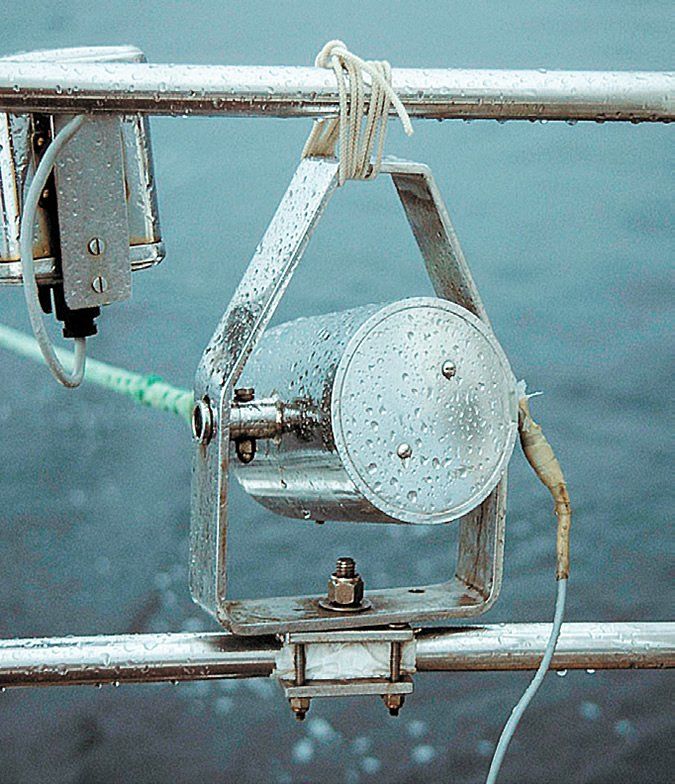For free power when under sail on ocean passages, towing generators are hard to beat. In the early 1980s I purchased a first generation towing generator from Hamilton Ferris. At six knots the output was five amps providing all the electricity I needed on passage. During 15 years and 100,000 miles of use I only needed to replace brushes and bearings twice.

Our current boat, a Hallberg-Rassy 46, came with a 24-volt house electrical system, and shortly after launching I contacted Hamilton Ferris to purchase a 24-volt towing generator. He replied that hed had few requests for a 24-volt model and didnt plan on developing one. Currently Hamilton Ferris is working on an updated 12-volt model from their WP 200 which they plan to release this summer.

Several years ago I discovered the Aquair 100, made in the UK and distributed in the U.S. by Marine Warehouse in Miami. They offer 12, 24, and 48 volt units and the price is surprisingly reasonable: $1,495 plus $270 for a regulator. The kit consists of a generator in a stainless circular frame, 30 meters of very sturdy towline, and a towed turbine. The only other cost for me was a $50 for a Hella Marine waterproof plug that I mounted inside a cowl vent on the transom. The installation of the stainless circular frame is a simple lashing – no drilling holes in the deck required. I find that lashing the generator to the pushpit/stern pulpit with Spectra cord allows enough movement plus the convenience of taking only taking a minute to untie and stow.
When deploying the turbine for the first time I suggest keeping boat speed under three knots so you have an idea of how quickly the line feeds out. Ive found faking the towline back and forth on the deck and standing clear when tossing the turbine in the water works well. Once deployed, there is a very slight hum, barely audible below decks. I havent been able to detect any drop in boat speed after deployment and sharks or fish attacking to turbine have never been a problem. The output depends on how deeply discharged the vessels batteries are, but we generally see around 5 amps with 6 knots of boat speed.
A Delrin connector attaches the tow rope to the generator and is designed to break if the turbine snags the bottom or a large object and although weve caught Sargasso weed and abandoned nets weve never had the connector break. Ive found that slowing the boat down by luffing up slightly makes pulling in the turbine easier. For a better grip, I wear the heavy rubber gloves that I use for handling the anchor chain. While pulling the turbine in at speeds of over 5-6 kts, the rope sometimes gets kinks in it. To remove the kinks, just unshackle the turbine and trail the rope astern for a minutes allowing it to unwind.
Spare parts are listed on Marine Warehouses website, www.marinewarehouse.net and Ive ordered but not yet needed a spare turbine, shaft seal and bearings.
Both Hamilton Ferris and Aquair offer wind conversion kits to turn their towing generators into wind generators but after reading the Practical Sailor February 15, 2003 test report, you may find a dedicated wind generator more user friendly.
Another more powerful option are the Watt&Sea Hydrogenerators, utilized by many French racing boats. The power output is staggering: 10 amps at 5 knots for the 300 which costs $3,290 and 40 amps at 9 knots for the 600 which runs $4,690. Bainbridge International is US distributor and Hydrovane, located in Vancouver is Canadian distributor and has developed a very clever bracket ($450) allowing Hydrovane owners to attach a Watt&Sea directly to their windvane.
Amanda and John Neale spend seven months at sea sailing 10,000 miles a year while leading sailing training expeditions. The have more than 500,000 sea miles combined experience. When not at sea, they enjoy winter kayaking from their island home at Roche Harbor, eight miles east of Victoria, B.C. Their website is: www.mahina.com.










































Hi
I’m afraid I don’t know very much about this so this might not be the best question.
I keep my boat in a harbour, but it’s fed by two rivers. Therefore there’s pretty much always a flow of water.
Many people use wind vanes and solar panels to charge their cranking and domestic batteries. Do you think something like the Watt&Sea Hydrogenerator could be used for this – perhaps a simpler version?
I’m just curious.
TIA Andy